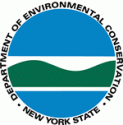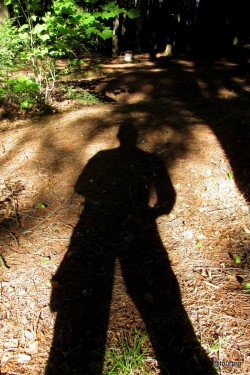Nature and people will benefit from the protection of lands and waters in the Upper Hudson River watershed and Adirondack High Peaks.
 Governor Andrew Cuomo and New York State Department of Environmental Conservation (DEC) Commissioner Joe Martens today joined The Nature Conservancy to celebrate their commitment to a historic conservation project in the Adirondacks. The project, which in its entirety includes the conservation of 161,000 acres, is more than an investment in clean air, clean water and healthy forests for current and future generations: it also bolsters the Adirondack economy.
Governor Andrew Cuomo and New York State Department of Environmental Conservation (DEC) Commissioner Joe Martens today joined The Nature Conservancy to celebrate their commitment to a historic conservation project in the Adirondacks. The project, which in its entirety includes the conservation of 161,000 acres, is more than an investment in clean air, clean water and healthy forests for current and future generations: it also bolsters the Adirondack economy.
Today’s announcement sets a path forward for New York State to acquire from The Nature Conservancy over the coming years 69,000 acres of forests with more than 180 miles of rivers and streams, 175 lakes and ponds, and six mountains taller than 2,000 feet —primarily within the watershed of the Upper Hudson River.
The state will acquire the properties over five years for a total purchase price of $47,396,413. The money will come from the state’s dedicated Environmental Protection Fund and the first purchase will be completed in 2012.
“The Nature Conservancy is proud to be working with New York State under the leadership of Governor Andrew Cuomo and Commissioner Joe Martens to conserve these spectacular lands and waters as part of the publicly owned Forest Preserve. New York is doing more than conserving land and waters, it is investing in the recreation and tourism economy that is so vital to the North Country and its future,” said Bill Ulfelder, Executive Director of The Nature Conservancy in New York.
All of the property to be transferred to New York State, formerly owned by the Finch, Pruyn & Co, has been closed to the public for more than a century. It will become accessible to all in coming years for hiking, paddling, hunting, fishing and other recreational uses. Some new snowmobile trails will be created as well.
Acquiring these tracts will diversify the local economy by offering communities and businesses certainty as they plan take advantage of the new public access opportunities offered by the Adirondack Forest Preserve. Outdoor recreation contributes $11.3 billion to the state’s economy, each year and supports approximately 130,000 jobs statewide.
“New York State is demonstrating a remarkable commitment to balance and foresight by implementing a conservation plan that meets the needs of local communities, businesses, wildlife, and so many others. Of the project’s 161,000 acres, 94,000 have already been secured for the sustainable production of forest products through a conservation easement. Now, millions of New Yorkers and tourists are eagerly anticipating the state’s acquisitions of new public lands,” said Michael Carr, Adirondack Chapter Director of The Nature Conservancy.
The state’s investment in these marvelous recreation and conservation tracts includes OK Slip Falls, in Indian Lake; Essex Chain of Lakes, in Minerva and Newcomb; wild upper reaches of our state’s longest river, the Hudson, and key tributaries, like the Cedar and Indian Rivers; and Boreas Ponds, at the southern edge of the High Peaks Wilderness, in North Hudson. Further south, in Adirondack Park gateway communities, the state will acquire thousands of acres of forests known for expansive wetlands, cascading streams, and prime moose habitat, and forests a few miles north of Saratoga Springs with nearly 20 miles of mountain biking trails.
“The Boreas Ponds tract could be a big draw for people to hike, fish, hunt, and camp. It is a truly magnificent area that will at some point be open to the public,” said North Hudson Town Supervisor, Ronald Moore.
“In time, a spectacular, wild and previously private recreational destination will be open to all. To hikers, paddlers, hunters and anglers it means new adventures and many more days and nights under the sky. To photographers and naturalists it means an extravaganza of new sights. To outdoor professionals it means welcome new business,” said Elizabeth Lee, a New York State Licensed Guide, referring to the Essex Chain of Lakes Tract in Minerva and Newcomb.
“Mountain bikers and other outdoor enthusiasts spend millions each year pursuing their interests. These newly protected lands will draw many to the Adirondack region for outdoor recreation. Our group looks forward to working with DEC in the future to help preserve, maintain and enhance the natural resources of this forest,” said Steve Godlewski, President of the Saratoga Mountain Bike Association (SMBA), which currently maintains trails for exclusive use by its members on a 540-acre forest in the town of Greenfield. The SMBA has already sent a letter to DEC urging the state to purchase the land and expressing interest in partnership to maintain the forest as a valuable public asset for a variety of recreational uses.
Protecting these Adirondack forests and their vast water resources adds immeasurable value to the region as a major travel and recreation destination. Ten million people already visit the Adirondacks annually, supporting one out of every five jobs in the area, and visitors spend more than $1 billion at local inns, restaurants, convenience stores and outdoor outfitters. The North Country Regional Economic Development Council confirms that the tourism industry is a vital growth sector of the upstate economy.
Some of the properties to be transferred from the Conservancy to New York State will be transferred subject to existing lease agreements. The broad parameters of those agreements and details about public access will be announced as each transaction closes.
For more information: The Heart of the Adirondacks

 Grand Isle, Vt – The Lake Champlain Basin Program’s 2012 State of the Lake and Ecosystem Indicators Report was released today. The report, produced every 3-4 years, informs citizens and resource managers about Lake Champlain’s condition and provides a better understanding of threats to its health and opportunities to meet the challenges ahead.
Grand Isle, Vt – The Lake Champlain Basin Program’s 2012 State of the Lake and Ecosystem Indicators Report was released today. The report, produced every 3-4 years, informs citizens and resource managers about Lake Champlain’s condition and provides a better understanding of threats to its health and opportunities to meet the challenges ahead. New Yorkers should keep their distance and not to disturb newborn fawns or other young wildlife as many animals are in the peak season for giving birth, the
New Yorkers should keep their distance and not to disturb newborn fawns or other young wildlife as many animals are in the peak season for giving birth, the 


